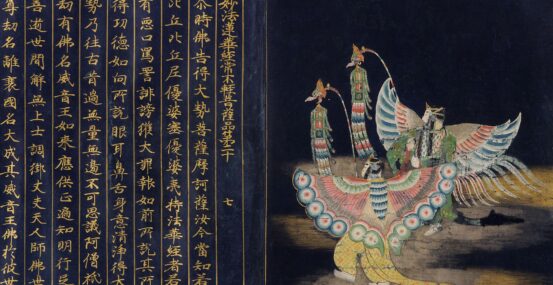In an age when we can delete digital words with the press of a button, it can be hard to appreciate the sanctity, mystery, and power that written texts held for historic cultures. In Buddhism, the most powerful of all texts were the canonical scriptures known as sutras. These sutras were not only key vehicles for transmitting the teachings of the Buddha, known as the dharma, but they were also objects of numinous beauty, solace, and protection.
Sutras took on particular importance in times of crisis. Buddhists in eleventh-century Japan believed they had entered the third and final age, during which a darkness of ten thousand years would obscure the dharma. Against this backdrop, sutras reached a peak of sumptuousness and artistry through aristocratic patronage. Protected in temples or ceremonially buried in tomblike mounds, these sutras would preserve the dharma until the Future Buddha descended to usher in a new golden age.
The Future Buddha’s distant appearance ultimately gave way in Japan to the allure of immediate salvation through faith in Amitabha, the buddha of the Western Pure Land.



